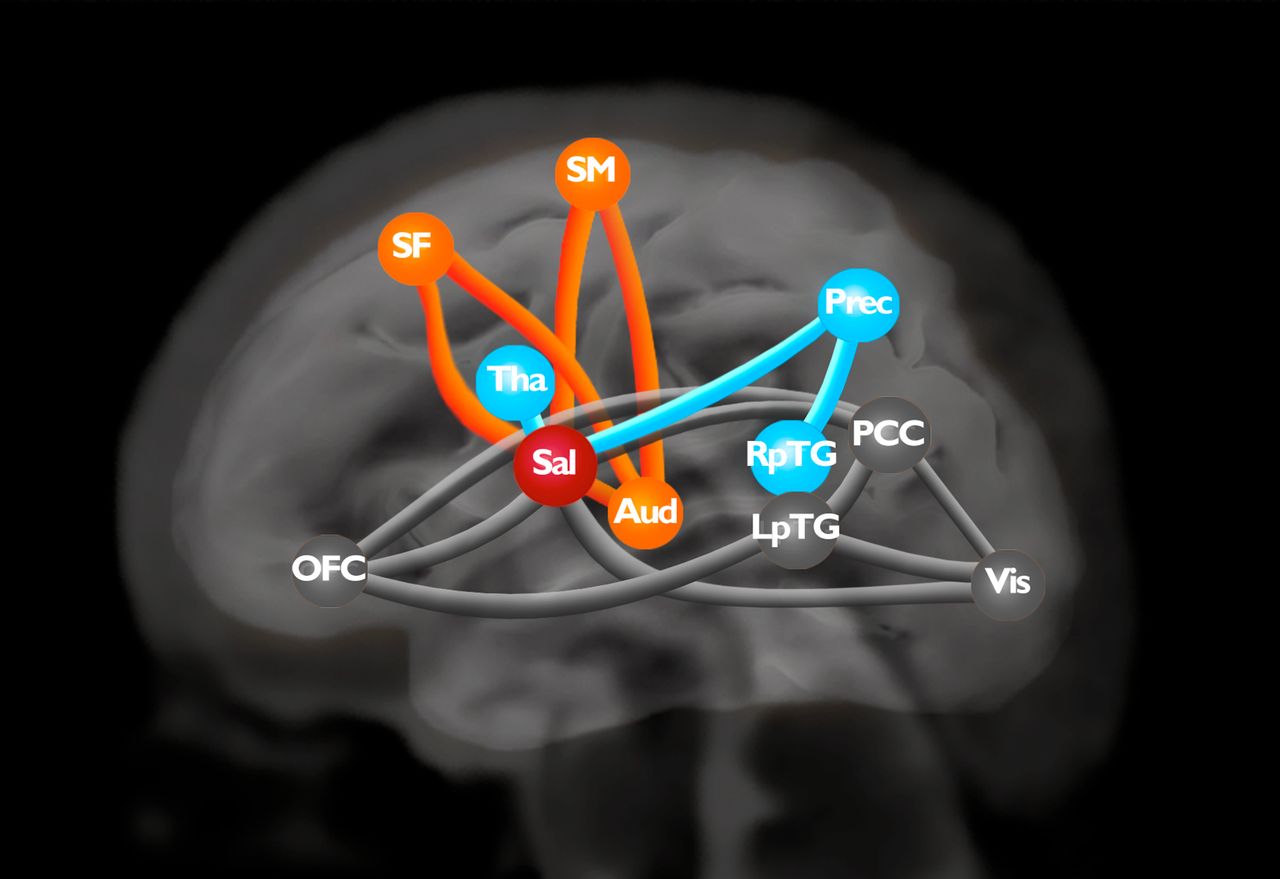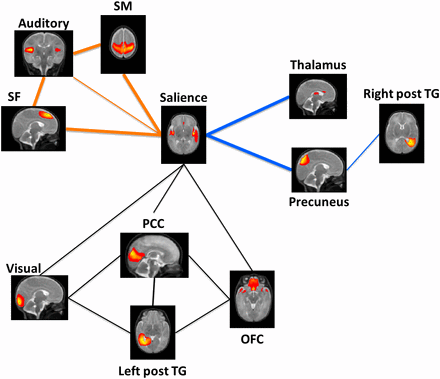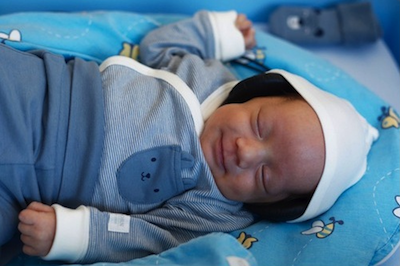|
|
Developmental Biology - Premature Births
Music Builds Brains In Preemies
How music specially composed for premature infants strengthens the development of their brain networks and could limit neurodevelopmental delay...
In Switzerland, as in most industrialized countries, nearly 1% of children are born 'very prematurely' or before the 32nd week of pregnancy, which represents about 800 children yearly. While advances in neonatal medicine now give them a good chance of survival, these children are however at high risk of developing neuropsychological disorders.
To help the brains of fragile newborns develop as well as possible, despite the stress of intensive care, researchers at the University of Geneva (UNIGE) and the University Hospitals of Geneva (HUG), Switzerland, proposed an original solution: music written especially for them.
Their first results, published in the Proceedings of the National Academy of Sciences (PNAS), are surprising: medical imaging reveals in a particular brain network involved in many sensory and cognitive functions, the neural networks of premature infants listening to this music develop much better.
 Edges represent lower functional connectivity between components in preterm controls than in full-term newborns. Node localization based on local maxima of z-score in each network. ORANGE: module M1; BLUE: module M2, BLACK: module M3. Sal, salience network; Aud, auditory cortex; Tha, thalamus; RpTG, right posterior temporal gyrus, Vis, visual cortex; LpTG, left posterior temporal gyrus. Edges represent lower functional connectivity between components in preterm controls than in full-term newborns. Node localization based on local maxima of z-score in each network. ORANGE: module M1; BLUE: module M2, BLACK: module M3. Sal, salience network; Aud, auditory cortex; Tha, thalamus; RpTG, right posterior temporal gyrus, Vis, visual cortex; LpTG, left posterior temporal gyrus.

Differences between preterm music-exposed and preterm control infant brains. Bold edges represent significantly higher in functional connectivity in the premature infants exposed to music (PM) than in premature control infants (PC) (FDR < 0.05). Orange: module M1; blue: module M2; and black: module M3. Left post TG, left posterior temporal gyrus; Right post TG, right posterior temporal gyrus.
The Neonatal Intensive Care Unit at the HUG each year welcomes 80 children born far too early - between 24 and 32 weeks of pregnancy, i.e. almost four months ahead of schedule for some of them. The vast majority will survive, but half later develop neurodevelopmental disorders, including learning difficulties, attentional or emotional disorders.
"At birth, these babies' brains are still immature. Brain development must therefore continue in the intensive care unit, in an incubator, under very different conditions than if they were still in their mother's womb. Brain immaturity, combined with a disturbing sensory environment, explains why neural networks do not develop normally."
Petra Hüppi PhD, Professor, Division of Development and Growth, Department of Pediatrics, University Hospital of Geneva, UNIGE; Faculty of Medicine, Head of HUG Development and Growth Division, and Director of this work.
Tailor-made music
Geneva researchers started from a practical idea: as neural deficits of premature babies are due, at least in part, to unexpected and stressful stimuli as well as to a lack of stimuli while adapting to their condition, their environment should be enriched by introducing pleasant and structure stimuli. And, as hearing is functional early on, music appeared to be a good candidate. But which music?
"Luckily, we met the composer Andreas Vollenweider, who had already conducted musical projects with fragile populations and who showed great interest in creating music suitable for premature children," recalls Petra Hüppi.
"It was important that these musical stimuli were related to the baby's condition. We wanted to structure the day with pleasant stimuli at appropriate times: a music to accompany their awakening, a music to accompany their falling asleep, and a music to interact during the awakening phases."
Lara Lordier PhD, Division of Development and Growth, Department of Pediatrics, University Hospital of Geneva; Neuroscience of Emotion and Affective Dynamics Lab, Department of Psychology and Educational Sciences, University of Geneva, Switzerland.
To choose instruments suitable for these very young patients, Andreas Vollenweider played many kinds of instruments to the babies, in the presence of a nurse specialized in developmental support care. "The instrument that generated the most reactions was the Indian snake charmers' flute the pungi, recalls Lordier. "Very agitated children calmed down almost instantly, their attention was drawn to the music!"
The composer wrote three, eight minutes each, sound pieces with punji, harp and bells.
More efficient brain functional connections through music
The study was conducted in a double-blind study. A group of (1) premature infants listened to the music along with (2) a control group of premature infants, and (3) a control group of full-term newborns — to assess whether brain development in premature infants listening to the music would be more similar to full-term babies. Scientists used functional MRI at rest on all three groups. Without music, premature babies generally had poorer functional connectivity between brain areas than full-term babies, confirming the negative effect of prematurity.
"The most affected network is the salience network which detects information and evaluates its relevance at a specific time, and then makes the link with the other brain networks that must act. This network is essential, both for learning and performing cognitive tasks as well as in social relationships or emotional management," explains Lordier.
In intensive care, children are overwhelmed by stimuli unrelated to their condition: doors open and close, alarms are triggered, etc. Unlike a full-term baby who, in utero, adjusts its rhythm to that of its mother, the premature baby in intensive care can hardly develop the link between the meaning of a stimulus in a specific context.
On the other hand, the neural networks of children who heard Andreas Vollenweider's music were significantly improved: functional connectivity between their salience network and auditory, sensorimotor, frontal, thalamus and precuneus networks, was indeed increased in brain network organisation more similar to full-term infants.
When children grow up
The first children enrolled in the project are now 6 years old, at which age cognitive problems begin to be detectable. Scientists will now meet again their young patients to conduct a full cognitive and socio-emotional assessment and observe whether the positive outcomes measured in their first weeks of life have been sustained.
Significance
Preterm babies are cared for in neonatal intensive care units (NICU), which are busy places with a lot of mechanical noise increasingly recognized to disrupt normal brain development. NICUs therefore invest in developmental care procedures, with music for example, but neurobiological evidence for these interventions is missing. We present results from a clinical trial to study the effects of a music intervention on preterm infants’ brain development. Based on resting-state fMRI, we provide evidence that music enhanced connectivity in a brain circuitry involving the salience network with regions implicated in sensory and higher-order cognitive functions, previously found to be altered in preterm infants. To our knowledge, this study is unique in observing an impact of music on brain development in preterm newborns.
Abstract
Neonatal intensive care units are willing to apply environmental enrichment via music for preterm newborns. However, no evidence of an effect of music on preterm brain development has been reported to date. Using resting-state fMRI, we characterized a circuitry of interest consisting of three network modules interconnected by the salience network that displays reduced network coupling in preterm compared with full-term newborns. Interestingly, preterm infants exposed to music in the neonatal intensive care units have significantly increased coupling between brain networks previously shown to be decreased in premature infants: the salience network with the superior frontal, auditory, and sensorimotor networks, and the salience network with the thalamus and precuneus networks. Therefore, music exposure leads to functional brain architectures that are more similar to those of full-term newborns, providing evidence for a beneficial effect of music on the preterm brain.
Authors
Lara Lordier, Djalel-Eddine Meskaldji, Frédéric Grouiller, Marie P. Pittet, Andreas Vollenweider, Lana Vasung, Cristina Borradori-Tolsa, François Lazeyras, Didier Grandjean, Dimitri Van De Ville, and Petra S. Hüppi.
Acknowledgements
The authors thank all the nurses and all the parents and babies who participated in this study; and the Division of ENT, the Plateforme de Recherche de Pediatrie, and the Centre for Biomedical Imaging of the University Hospital of Geneva for their support. The authors declare no competing interests. This study was supported by grants from the Swiss National Science Foundation (32473B_135817/1), the foundation Prim’enfance, and European Union’s Horizon 2020 research and innovation programme under Grant Agreement 666992.
This study is financed by the Swiss National Science Foundation as well as, among others, by the Prim'Enfance Foundation.
About MUSC
Founded in 1824 in Charleston, MUSC is the oldest medical school in the South, as well as the state's only integrated, academic health sciences center with a unique charge to serve the state through education, research and patient care. Each year, MUSC educates and trains more than 3,000 students and 700 residents in six colleges: Dental Medicine, Graduate Studies, Health Professions, Medicine, Nursing and Pharmacy. The state's leader in obtaining biomedical research funds, in fiscal year 2018, MUSC set a new high, bringing in more than $276.5 million. For information on academic programs, visit http://musc.edu.
Return to top of page
| |
|
Jun 10 2019 Fetal Timeline Maternal Timeline News
 Premature baby listening to music. CREDIT © Stéphane Sizonenko; University of Geneva (UNIGE) and the University Hospitals of Geneva (HUG)
|





